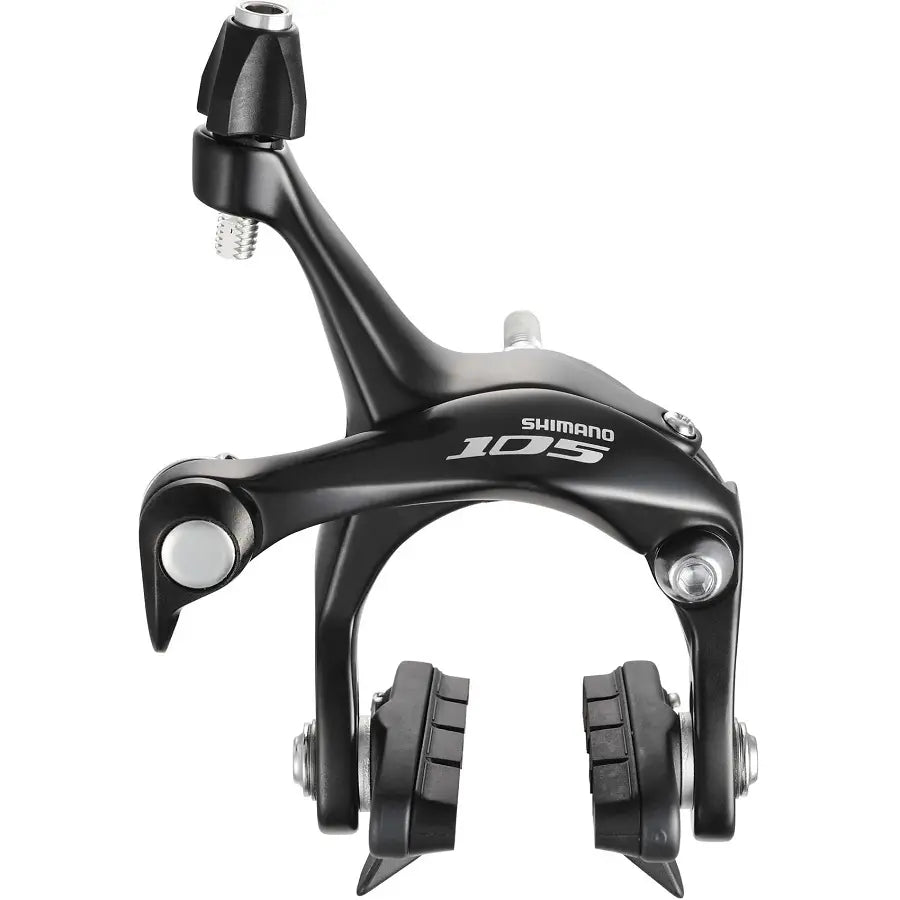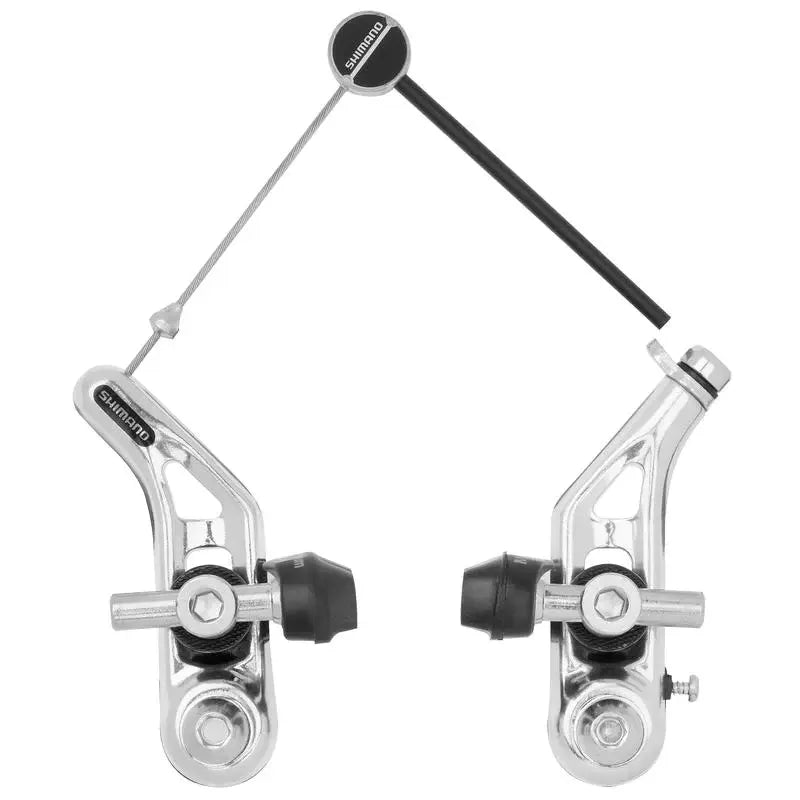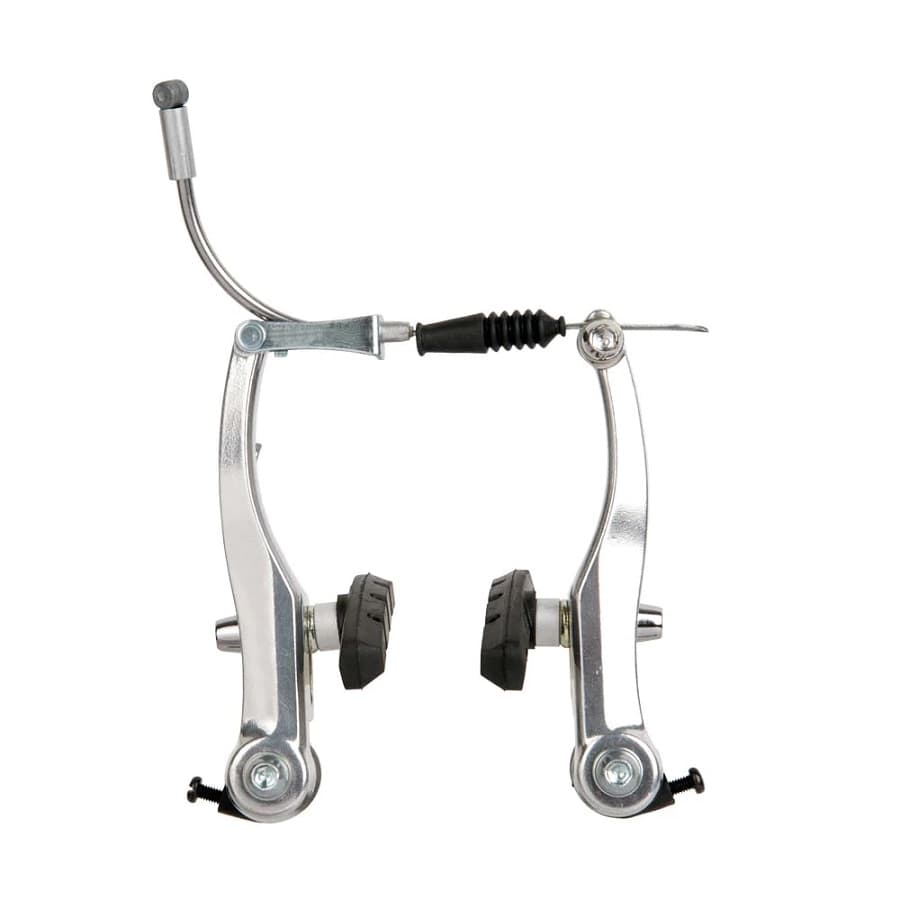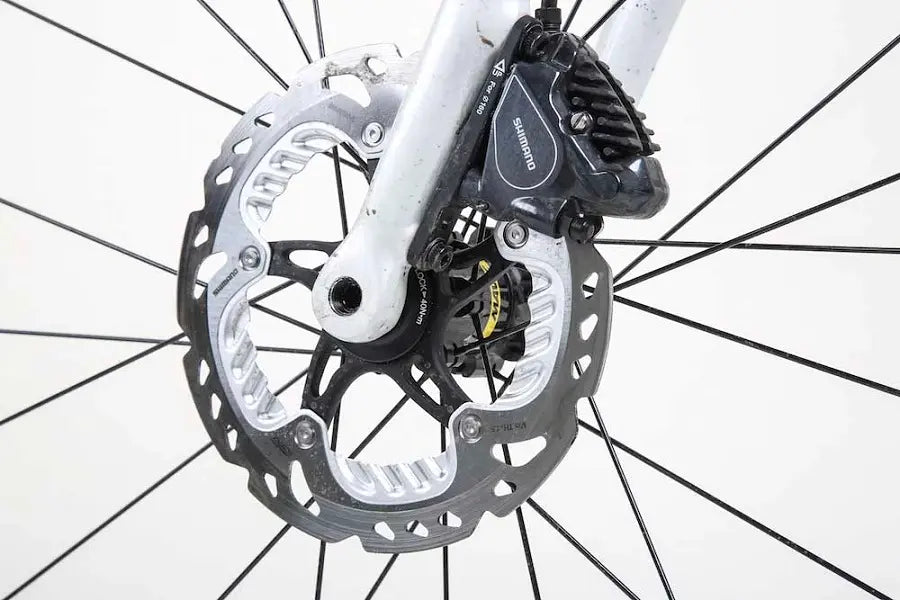There are many brake types available for bikes but we’re going to talk about the 4 most common types of bike brakes and briefly explain their pros and cons.
Our first bike brake type is Caliper Brake, it’s probably the most common type of bike brake among these 4 brakes that we’re about to mention in the article. You remember the Caliper Brakes if you ride a bike as a kid. It’s clamping down the metal rim to break. It's a very standard brake type when it comes to road bikes and youth bikes. They are simple but strong and reliable.

The second brake type is Cantilever Brakes. This type of bike brake is mostly used on race bikes because they’re far more powerful than the caliper brakes. Even though they’re less aero-dynamic they’re still preferred for the races.

The third brake type is called “V Brakes” also known as "linear-pull" or "direct-pull" brakes. They are known as the most strong brakes in difficult weather conditions out of all these 4 brake types. They can slow down and stop the wet even with muddy tires. These wheels mostly preferred off-road use. A downside with this type of bike brake is that they’re heavier compared to the first two types of brakes.

Our last type of bike brake is disc brakes. Disc brakes are stronger than V-brakes. Even though they’re heavier they need less hand pressure to work. They can handle excessive heat without damaging the rim as rim brakes do. If you end up in water or mud deep enough to the rotor, the pads will clean off the water and mud from the rotor with the help of strength and pressure. Basically, disc brakes are more powerful and reliable in difficult weather conditions and can tolerate high heat better.









